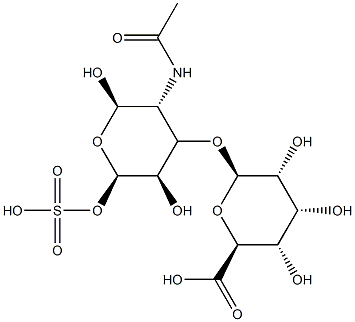Biomedical applications of chondroitin sulfate-based composites
Jun 26,2023
![]()
![]() General Description
General Description
Chondroitin sulfate-based composites have several potential biomedical applications due to their inherent properties such as biocompatibility, biodegradability, and ability to mimic the extracellular matrix. One application is in tissue engineering where chondroitin sulfate-based composites can be used as scaffolds to support the growth and regeneration of various tissues such as bone, cartilage, and nerve. Chondroitin sulfate has been shown to enhance cell adhesion and proliferation, making it a promising material for tissue engineering. Another potential application is in drug delivery systems where chondroitin sulfate can act as a carrier for targeted drug delivery. The negatively charged sulfate groups on chondroitin sulfate can bind positively charged drugs allowing for targeted release at specific sites. Additionally, chondroitin sulfate can be functionalized with other molecules such as peptides or proteins to further enhance targeted drug delivery. Overall, chondroitin sulfate-based composites have the potential to be useful in a variety of biomedical applications due to their unique properties and versatility. 1
![]()
![]() Sources and properties
Sources and properties
CS is a glycosaminoglycan that is isolated from animal cartilage and undergoes purification before becoming commercially available. The raw material for commercial production of CS comes from sources such as bovine, chicken, porcine or cartilaginous fishes like sharks and skate. The isolation process typically involves chemically hydrolyzing the cartilage, breaking down the proteoglycan core, eliminating proteins and recovering the CS, followed by purification. Traditional techniques involve alkaline hydrolysis with chemicals like urea, HCl, guanidine, NaOH or cysteine, along with cationic quaternary ammonia chemicals. Deproteinization is done using trichloroacetic acid and final purification is achieved through ion exchange/gel filtration chromatography or size exclusion chromatography. Sustainable alternatives include techniques like enzymatic digestion, specific precipitation using alcohol solutions, re-suspension and neutralizing using salt solution, and ultrafiltration-diafiltration to separate based on molecular weight. 2
CS exhibits various biological effects. Chondroitin sulfate proteoglycans (CSPGs) present on cell surfaces can aid cell adhesion to fibronectin and other matrix proteins. However, CSPG substrates have antiadhesive properties for certain cells such as fibroblasts. Additionally, CSPGs can inhibit neurite outgrowth in a dose-dependent manner, thus affecting neuronal stabilization and extension. CSPG4 has been shown to be upregulated in cancer cells and malignancies, making it an ideal target for approaches that utilize antibodies to target tumors. Moreover, CS-D facilitates neurite outgrowth by directly activating aVb3, which is an integrin found on neuronal surfaces. 3
![]() Biomedical applications
Biomedical applications
CS-based composites for tissue engineering
CS exhibits excellent anti-oxidant, anti-inflammatory, anti-coagulating, anti-thrombotic and immunomodulatory effects. As a biopolymer, CS-based composites also demonstrates outstanding biodegradability, biocompatibility, hydrophilicity, and mucoadhesion, providing it with a synergistic role between drugs and carriers. The anionic sulfate-rich GAG offers significant compressive strength and provides an appropriate 3D environment, making various CS scaffolds with proper anatomy and functionality extensively used in tissue engineering for superior cell proliferation and regeneration ability. 4
CS-based composites for delivering drugs
CS is widely used for preparing drug delivery formulations due to its exceptional qualities, such as non-immunogenicity, biodegradability, and biocompatibility. Various carriers for drug delivery based on CS have been developed, and their physicochemical properties, such as size, zeta potential (ZP), polydispersity index (PDI), drug loading (DL), drug encapsulation efficiency, and toxicity in vitro, have been evaluated. CS can also be employed to modify existing nanocarriers to confer them with specific characteristics, including increased longevity, targetability, stability, and other unique properties. CS-based systems are promising candidates for drug delivery due to their versatility and efficacy, and hold great potential for various biomedical applications. 5
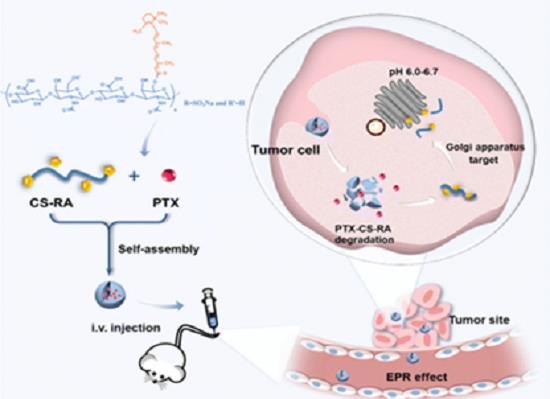
Figure 1. Self-assembled nanosystem based on CS targeting drugs to the Golgi apparatus.
Wound healing
Currently available hemostatic drugs have comparatively low biocompatibility, hemostatic performance, and wound healing capabilities, which makes it difficult to completely heal wounds. To address this issue, Zhang et al developed a serotonin/CS in situ injectable hydrogel crosslinked with aloe powder. The equilibrium swelling degree decreased to 48% with increasing polymer concentration. In vitro experiments demonstrated the success of this hydrogel in hemostasis and showed rapid wound healing abilities. Moreover, in vivo experiments using a mouse liver hemorrhage model confirmed its excellent hemostatic ability, as well as its effectiveness in promoting wound healing. In summary, the serotonin/CS hydrogel is an effective medium for hemostasis and wound healing, with potential application in the field of wound healing. 6
Reference![]()
1. Abourehab MAS, Baisakhiya S, Aggarwal A, et al. Chondroitin sulfate-based composites: a tour d'horizon of their biomedical applications. J Mater Chem B, 2022, 10(44):9125-9178.
2. Shi Y, Meng Y, Li J, Chen J, Liu Y and Bai X. Chondroitin sulfate: extraction, purification, microbial and chemical synthesis, J. Chem. Technol. Biotechnol, 2014, 89(10):1445–1465.
3. Shida M, Mikami T, Tamura JI, Kitagawa H. Chondroitin sulfate-D promotes neurite outgrowth by acting as an extracellular ligand for neuronal integrin αVβ3. Biochim Biophys Acta Gen Subj, 2019, 1863(9):1319-1331.
4. Anjum F, Lienemann PS, Metzger S, Biernaskie J, Kallos MS, Ehrbar M. Enzyme responsive GAG-based natural-synthetic hybrid hydrogel for tunable growth factor delivery and stem cell differentiation. Biomaterials, 2016, 87:104-117.
5. Zhao L, Liu M, Wang J, Zhai G. Chondroitin sulfate-based nanocarriers for drug/gene delivery. Carbohydr Polym, 2015, 133:391-399.
6. Zhang X, et al, An injectable serotonin-chondroitin sulfate hydrogel for bio-inspired hemostatic adhesives with high wound healing capability, Mater. Adv, 2021, 2(15):5150–5159.
- Related articles
- Related Qustion
- Pharmacological effects of chondroitin sulfate Jul 1, 2021
Chondroitin sulfate (CS, hereinafter referred to as CS) is a type of sulfated glycosaminoglycan, which exists in the connective tissues of humans and animals, mainly distributed in cartilage, bone, tendon, muscle membrane.
- Uses and Safety concerns of Chondroitin sulfate Oct 16, 2019
Chondroitin sulfate is a chemical that is normally found in cartilage around joints in the body. Chondroitin sulfate is usually manufactured from animal sources, such as shark and cow cartilage.
Idebenone is used for Alzheimer's disease, Huntington’s disease, liver disease, and heart disease. It is also used for a number of inherited disorders including a condition that causes vision loss.....
Jun 25,2023DrugsAzilsartan is a medication used to treat hypertension and has been shown to exhibit more potent antihypertensive action than other drugs in its class.....
Jun 26,2023APIChondroitin sulfate
9007-28-7You may like
Chondroitin sulfate manufacturers
- Chondroitin sulfate
-
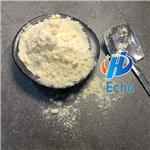
- $10.00/ kg
- 2024-04-27
- CAS:9007-28-7
- Min. Order: 1kg
- Purity: 99.7%
- Supply Ability: 200000kg
- Chondroitin Sulphate
-
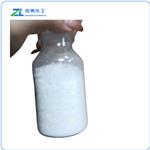
- $100.00 / 1kg
- 2024-04-24
- CAS:9007-28-7
- Min. Order: 1kg
- Purity: 99
- Supply Ability: 5000
- Chondroitin Sulfate
-
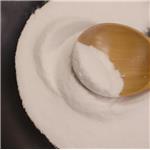
- $0.00 / 1kg
- 2024-04-23
- CAS:9007-28-7
- Min. Order: 1kg
- Purity: 99%
- Supply Ability: 10000kg




